
Hollywood is a neighborhood in the central region of Los Angeles County, California, mostly within the city of Los Angeles. Its name has come to be a shorthand reference for the U.S. film industry and the people associated with it. Many notable film studios, such as Sony Pictures, Walt Disney Studios, Paramount Pictures, Warner Bros. and Universal Pictures, are located near or in Hollywood.

Clovis is a city in Fresno County, California, United States. Clovis was established in 1890 as a freight stop for the San Joaquin Valley Railroad by a group of Fresno businessmen and Michigan railroad speculator Marcus Pollasky. The railroad bought the land from two farmers and named the station after one of them, Clovis Cole. Pollasky then developed a town on the site, also named Clovis.

San Pedro is a neighborhood located within the South Bay and Harbor region of the City of Los Angeles, California, United States. Formerly a separate city, it consolidated with Los Angeles in 1909. The Port of Los Angeles, a major international seaport, is partially located within San Pedro. The district has grown from being dominated by the fishing industry, to a working-class community within the city of Los Angeles, to an increasingly dense community.

Cornelius Cole was an American politician who served a single term in the United States House of Representatives as a Republican representing California from 1863 to 1865, and another term in the United States Senate from 1867 to 1873. Cole, who died at the age of 102 years, 47 days, is the longest-lived U.S. Senator.

The Pacific Electric Railway Company, nicknamed the Red Cars, was a privately owned mass transit system in Southern California consisting of electrically powered streetcars, interurban cars, and buses and was the largest electric railway system in the world in the 1920s. Organized around the city centers of Los Angeles and San Bernardino, it connected cities in Los Angeles County, Orange County, San Bernardino County and Riverside County.

Watts is a neighborhood in southern Los Angeles, California. It is located within the South Los Angeles region, bordering the cities of Lynwood, Huntington Park and South Gate to the east and southeast, respectively, and the unincorporated community of Willowbrook to the south.

Moses Hazeltine Sherman was an American land developer who built the Phoenix Street Railway in Phoenix, Arizona and streetcar systems that would become the core of the Los Angeles Railway and part of the Pacific Electric Railway in Los Angeles, California, and owned and developed property in areas such as the westside of Los Angeles, the San Fernando Valley and Hollywood, California. He also served on the Los Angeles Water Board. He was also known as M. H. Sherman and General M. H. Sherman.

The Second Street Cable Railway was the first cable car system to open in Los Angeles. Opened in 1885, it ran from Second and Spring Streets to First Street and Belmont Avenue. The completed railway was 6,940 feet long, just over a mile and a quarter, with a power house constructed in the middle, at Boylston Street. It was a single track system, with sidings where a down-hill car could coast past an up-hill car. The route included the steepest gradient on any street railway in North America, a 27.7 degree hill along Second Street between Bunker Hill Avenue and Hope Street on Bunker Hill. The line opened to Texas Street on Oct 8, 1885.
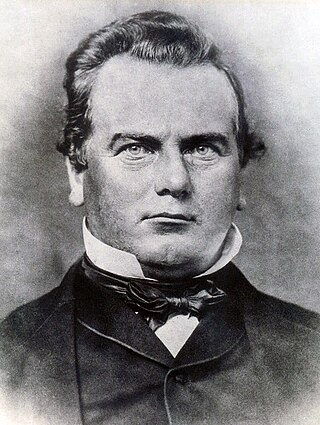
Phineas Banning was an American businessman, financier and entrepreneur.

Colonel Allensworth State Historic Park is a state park unit of California, United States, preserving Allensworth, the only California town to be founded, financed and governed by African Americans. The small farming community was founded in 1908 by Lt. Colonel Allen Allensworth, Professor William Payne, William Peck, a minister; John W. Palmer, a miner; and Harry A. Mitchell, a real estate agent, dedicated to improving the economic and social status of African Americans. Colonel Allensworth (1842–1914) had a friendship with Booker T. Washington and was inspired by the Tuskegee Institute and development in its neighboring town. Allensworth hoped to develop the "Tuskegee of the West".
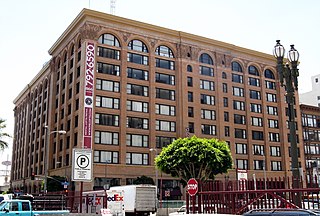
The historic Pacific Electric Building, opened in 1905 in the core of Los Angeles as the main train station for the Pacific Electric Railway, as well as the company's headquarters; Main Street Station served passengers boarding trains for the south and east of Southern California. The building was designed by architect Thornton Fitzhugh. Though not the tallest in Los Angeles, its ten floors enclosed the greatest number of square feet in any building west of Chicago for many decades. Above the train station, covering the lower floors, were five floors of offices; and in the top three was the Jonathan Club, one of the city's leading businessmen's clubs introduced by magnates from the Northeast. After the “Great Merger” of Pacific Electric into Southern Pacific Railroad in 1911, the PE Building became the home of Southern Pacific in Los Angeles. In 1925, a second electric rail hub, the Subway Terminal, was opened near Pershing Square to serve the north and west.
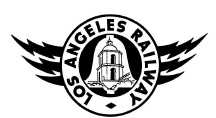
The Los Angeles Railway was a system of streetcars that operated in Central Los Angeles and surrounding neighborhoods between 1895 and 1963. The system provided frequent local services which complemented the Pacific Electric "Red Car" system's largely commuter-based interurban routes. The company carried many more passengers than the Red Cars, which served a larger and sparser area of Los Angeles.
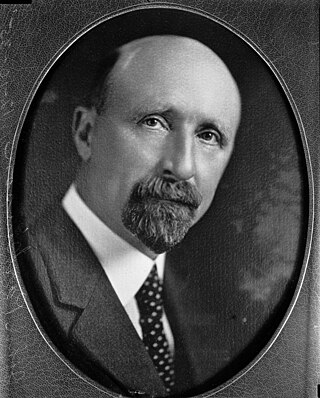
John and Donald Parkinson were a father-and-son architectural firm operating in the Los Angeles area in the early 20th century. They designed and built many of the city's iconic buildings, including Grand Central Market, the Memorial Coliseum and the City Hall.
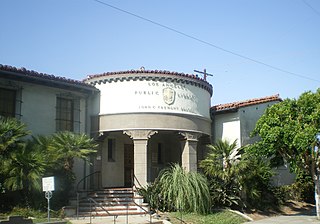
John C. Fremont Branch Library is a branch library of the Los Angeles Public Library in Los Angeles, California. It is adjacent to the Hancock Park district. It was built in 1927 based on a Mediterranean Revival design by architect Merl L. Barker.

The South Hollywood–Sherman Line was a suburban route of the Pacific Electric Railway. The line ran between Downtown Los Angeles and the suburb of Sherman. The line was named after Moses Sherman, who built the line and the Sherman street car yard on the line in West LA. The large 5.56-acre (2.25 ha) rail facility was on Santa Monica Boulevard just west of La Cienega Boulevard. The yard had a steam power house, a car barn and a shop building.

The Los Angeles Pacific Railroad (1896−1911) (LAP) was an electric public transit and freight railway system in Los Angeles County, California. At its peak it had 230 miles (370 km) of track extending from Downtown Los Angeles to the Westside, Santa Monica, and the South Bay towns along Santa Monica Bay.

Eli P. Clark (1847–1931) was a pioneer railway builder of Southern California and a leader in the civic, philanthropic and social activities of Los Angeles.
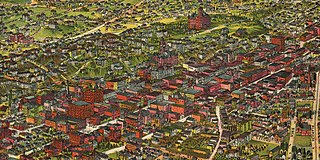
The late-Victorian-era Downtown of Los Angeles in 1880 was centered at the southern end of the Los Angeles Plaza area, and over the next two decades, it extended south and west along Main Street, Spring Street, and Broadway towards Third Street. Most of the 19th-century buildings no longer exist, surviving only in the Plaza area or south of Second Street. The rest were demolished to make way for the Civic Center district with City Hall, numerous courthouses, and other municipal, county, state and federal buildings, and Times Mirror Square. This article covers that area, between the Plaza, 3rd St., Los Angeles St., and Broadway, during the period 1880 through the period of demolition (1920s–1950s).

Lankershim and West Lankershim are historical names for an area in what is now the greater North Hollywood section of the San Fernando Valley region of Los Angeles County, California.





















